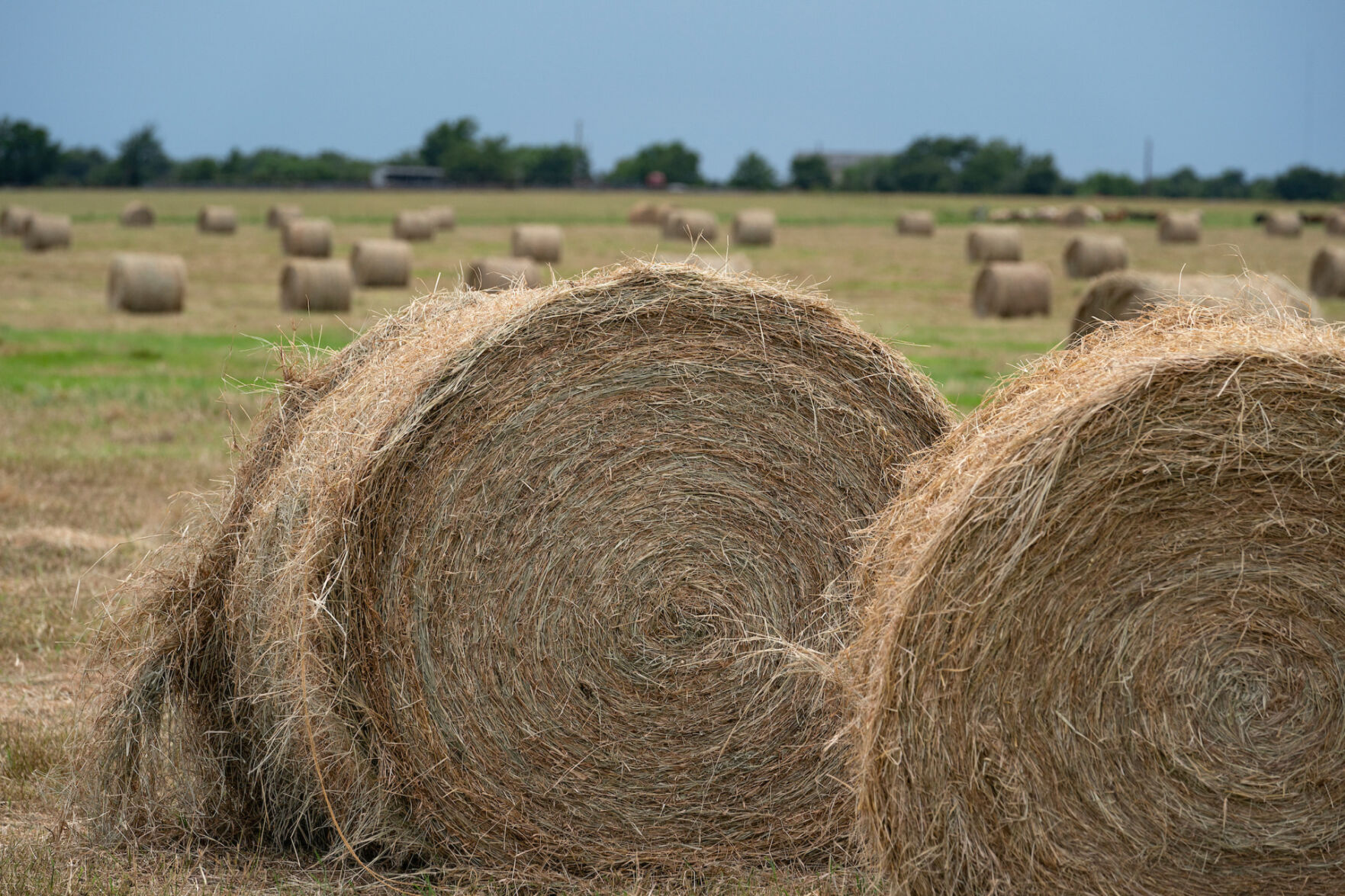State-By-State Hay Summary

Colorado—In the May 30 report, compared to the last report, trade activity and demand light. Southeast Colorado has started putting first cutting alfalfa and triticale in the windrow. Stable hay sold mostly steady. Growers and buyers are beginning to contract new crop first cutting baled alfalfa in northeast Colorado. Growers are reducing old crop asking prices in an effort to limit carry over.
Missouri—In the May 30 report, compared to last report, the supply of hay is light to moderate, demand is light and prices are mostly steady. After some rough weather over the holiday weekend, especially in the southern third of the state, farmers got right back after it and very little hay equipment was setting unused this week. Some fields did have wet spots and there was some tracking observed in some fields around. Progress is running just slightly ahead of the five year average.
Nebraska—In the May 30 report, compared to last report, hay sold steady on thin test of the market. Demand remains light. Quite a few producers are green chopping their first cutting alfalfa and its going to dairies or feedlots. Tonnage reports vary from field to field in all areas. Some reports of 2 tons plus per acre. On fields with weevils that has not been sprayed around 1 to 1.50 tons per acre.
Oklahoma—In the May 24 report, compared to the last report, storms across Oklahoma have slowed down some hay trade as well as hay baling. Wheat hay movement has picked up but not enough to say the demand is high. Old-crop hay continues to move lower in price as the new hay season starts. There are still some barns full of old-crop hay that are trying to be sold and emptied for new-crop hay. Wheat harvest has started in parts of Oklahoma. The rest of Oklahoma’s wheat harvest will begin in the coming weeks, which might slow down more trade. Next report will be released June 7.
Texas—In the May 31 report, hay prices are mostly steady to firm. Hay demand is picking up. Some excess old crop hay as well as some first cutting are beginning to move, but the majority of the hay moving is still previously contracted loads that are now being delivered. Winter wheat in the Panhandle is beginning to be laid down for hay, as the lack of precipitation in the last month has caused producers to lay it down for hay instead of hold on to the crop for grain production. First cutting has wrapped up across the majority of the state. Next report will be released June 14.
South Dakota—In the May 31 report, compared to last report, demand has been lower than normal and most farmers have started cutting. Demand is expected to pick up when first crop is cut and ready to go.
New Mexico—In the May 31 report, compared to last report, hay sales are steady and the demand is low in some parts of the state. There has been little to no moisture across the state. Alfalfa hay for the first cutting is 74% complete, southern part of the state are 12% into their second cutting. According to National Agricultural Statistics Service New Mexico field office May 26, hay and roughage supplies were reported as 41% very short, 48% short, and 11% adequate, compared with 41% very short, 50% short, 8% adequate, and 1% surplus last week. Stock water supplies were reported as 60% very short, 22% short, and 18% adequate, compared with 64% very short, 20% short, 15% adequate.
Wyoming—In the May 30 report, compared to last week, hay prices steady on thin test of the market. Demand was light. Some producers are thinking of starting next week on alfalfa production especially in fields that have a lot of weeds like mustard. Cool weather continues across the region and the eastern 1/3 of the state is abnormally dry per U.S. drought monitoring. Next report will be released June 13.
Montana—In the May 31 report, compared to last report, hay was too lightly tested to develop any market trend. Hay sales were near a standstill week. Showers and afternoon thunderstorms fell in many locations this week which helped further improve drought conditions in the east and central portions of the state. Some producers are starting to talk about new crop prices but many remain unclear on where they want to price new crop hay. Only one small contract of new crop hay was seen this week. Western drought conditions continue to see expansion as most locations in western Montana missed the rainfall this past week. Very light demand continues to be seen as most ranchers have turned out pairs for the year. Demand for straw is light as heavy straw supplies continue to be seen especially in the northern portion of the state.



